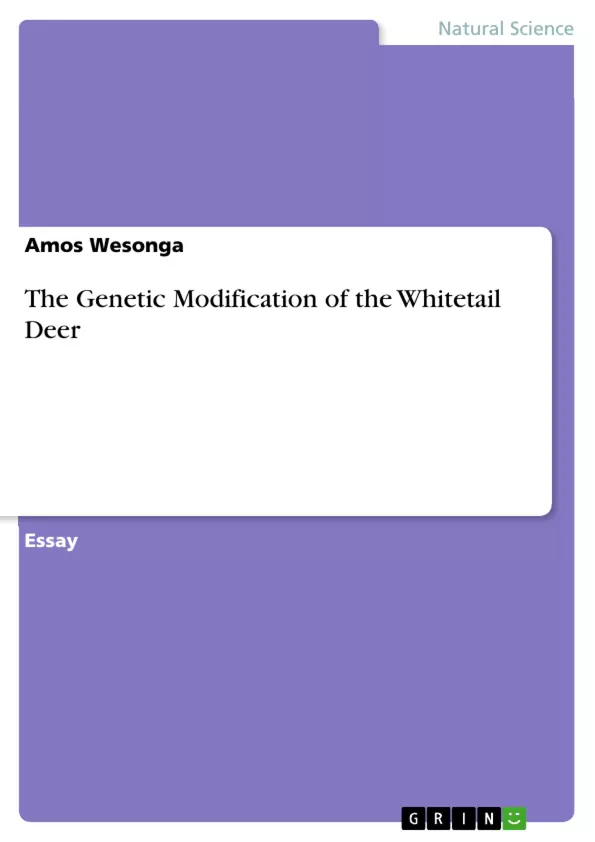White-tailed deer are unique to the fact that their antlers can regenerate with changes in season. These antlers have various uses, and for this purpose, farmers and game communities have sought the best way to enhance the deer growth from the purpose of improved antler development, thus, increase the supply of antlers needed to meet its demand. Genetic manipulation is incurred by artificially selecting desired traits that include more massive antlers, long antlers, and broader base circumference of antlers among other vital traits, achieved through deletion or insertion in a farm or lab setting. The result is that over the years, some undesired traits in these deer are eliminated or faced out gradually through the elimination of animals that exhibit these unwanted traits such as lightweight and spiked antlers. Evidently, desired traits in whitetail deer have forced farmers to genetically manipulate these mammals for the improvement of antler qualities, essential for given uses
Table of Contents
- Introduction
- Genetic Characteristics of White-tailed Deer
- Heritability of Antlers
- Gender-Based Genetics
- Subjectivity to Environment
- Factors that Contribute to Greater Antler Growth
- Age
- Genetics
- Nutrition
- Genetic Modification of Whitetail Deer Antlers
Objectives and Key Themes
This research paper aims to investigate the genetic characteristics of whitetail deer antlers and establish how these characteristics can be manipulated to enhance antler growth for harvesting purposes. The paper explores the heritability of antler traits, the influence of gender and environment on antler development, and the key factors contributing to greater antler growth, including age, genetics, and nutrition.
- Genetic manipulation of whitetail deer antlers
- Heritability of antler traits
- Factors influencing antler growth (age, genetics, nutrition)
- Methods for genetic modification
- The role of testosterone in antler regeneration
Chapter Summaries
The first chapter provides a brief overview of the genetic characteristics of whitetail deer antlers, highlighting their heritability, gender-based differences, and susceptibility to environmental influences. The second chapter delves into the key factors that contribute to greater antler growth, emphasizing the importance of age, genetics, and nutrition. The third chapter explores the methods used to genetically modify whitetail deer antlers, outlining both natural selection strategies and laboratory techniques for manipulating desired traits.
Keywords
The main keywords and focus topics of this research paper include whitetail deer, antler growth, genetics, heritability, gender, environment, age, nutrition, genetic modification, and testosterone.
- Quote paper
- Dr. Amos Wesonga (Author), 2016, The Genetic Modification of the Whitetail Deer, Munich, GRIN Verlag, https://www.grin.com/document/439103



